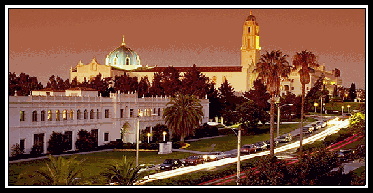B. Local Government
| Types
of Local Governments |
| Type |
# of units in
1992 |
% of local
expenditures |
| County |
3,043 |
23 |
| Municipality |
19,279 |
33 |
| Township and town |
16,656 |
3 |
| School district |
14,422 |
30 |
| Special district |
31,555 |
11 |
| Total |
84,995 |
100 |
|
1. Role of government
| Per Capita Expenditures by Local
Government (1996-1997) |
|
Education
Libraries
Public welfare
Hospitals
Health
Highways
Other
Police protection
Fire protection
Other
|
$1150
22
142
148
74
125
35
153
73
59
|
a. Stabilization
- Control inflation and unemployment
- National concern, not local
b. Income redistribution
- Difficult at local
level, people can move to avoid redistribution
c. Resource allocation
- Determining the
appropriate production of goods
(1) Natural monopoly
.
.
.
.
.
.
.
.
Ex. -
Sewage, mass transit
(2) Externalities
.
.
.
.
.
.
.
.
Ex. -
Education, art, libraries
- Public safety
externalities could work either way -
external benefits if criminals caught,
external costs if criminals driven to
another jurisdiction
(3) Local public goods
(a)
Characteristics:
i) Nonrivalrous
consumption - consumption by
one person does not reduce
consumption by others
- Pure local public good => MC = 0
- Impure or congestible public good -
semirivalrous
ii) Nonexcludability
- impractical to exclude some
people from consuming good
iii) Localized
benefits - benefits confined
to small geographic area
Ex. -
Parks, police and fire protection
(b) Optimal
provision
.
.
.
.
.
.
.
.
.
.
Result of voting:
.
.
.
.
.
.
.
.
.
.
(c) Tiebout model
- Individuals differ in
preferences and willingness to pay
- Individuals "vote with their
feet" - move to
communities with desired level of
services and taxes
i) Assumptions
- Households
"shop" for jurisdiction
with the right combination of local
public goods and taxes
- Households have
perfect information and mobility
- No
interjurisdictional spillovers - no benefits outside
of a jurisdiction
ii) Consequences
- Communities
homogeneous, more efficient
.
.
.
.
.
.
.
.
.
.
.
.
.
.
.
.
.
.
.
.
- Sorting reinforced if marginal benefit of
local public goods per unit of land used is higher for the rich than
for the poor
- Mixing if marginal benefit of
local public goods
per unit of land used is higher for the rich than for the poor
iii) Property tax financing
- Large houses => lower tax rate
- Sort according
to housing consumption and property
values, in addition to demand for public goods
- Use exclusionary zoning (large minimum
lot size) to limit entry
2. Optimum level of government
a. Local provision of
goods
- Meets diverse demand
=> improved efficiency
- Externalities if not
big enough => inefficient
- Higher costs if
economies of scale exist
.
.
.
.
.
.
.
.
.
b. Metropolitan
consolidation
- Can exploit economies
of scale
- Prevents suburban
exploitation
.
.
.
.
.
.
.
.
.
.
c. Tiebout model and metropolitan
consolidation
.
.
.
.
.
.
.
.
.
.
- Consolidation
deals with externalities, but not
with diversity
3. Local revenue
a. Property tax
Tax on residential, commercial and
industrial property
- Assessed value - official
value of the property for tax purposes
- Tax rate - percent of assessed
value paid in taxes
- Property tax = Assessed value * tax
rate
Ex. -
.
.
.
(1) Residential property tax
Who bears the burden of the property tax?
(a) Land
.
.
.
.
.
.
.
.
.
.
(b) Improvements
(traditional view)
.
.
.
.
.
.
.
.
.
.
(c) Improvements (new
view)
.
.
.
.
.
.
.
.
.
.
(2) Commercial and
industrial
Who bears the burden of the
commercial and industrial property tax?
(a) Land
.
.
.
.
.
.
.
.
.
.
(b) Improvements
.
.
.
.
.
.
.
.
.
.
(c) Differential tax rates
- Residential and business taxed at
different rates
.
.
.
.
.
.
.
.
.
.
- Tax exporting
- goods consumed by people from
outside the city
.
.
.
.
.
.
.
.
.
.
(3) Property tax limitation
(a) Types of limits
- Limit on tax rate for a particular
type of government
- Limit on tax rate for overall local
spending
- Limit on property tax revenue
growth
- Limit on assessment growth
(b) Proposition 13 (1978)
.
.
.
.
.
.
(c) Consequences
- Decreased property tax revenue
- Increase in charges and fees
b. Intergovernmental grants
- Grants of money from
higher level of government to lower level
of government
- Used to deal with
interjurisdictional spillovers, and
because of mismatches between revenue and
expenditures
(a) Unconditional
grant - can be spent on wide variety of
purposes
(b) Conditional
(categorical) grant - funds earmarked for
narrow range of purposes
(c) Matching grant
- recipient must match amount of grant with
spending on specific activity
(d) Block grant
- consolidation of categorical grants
|


